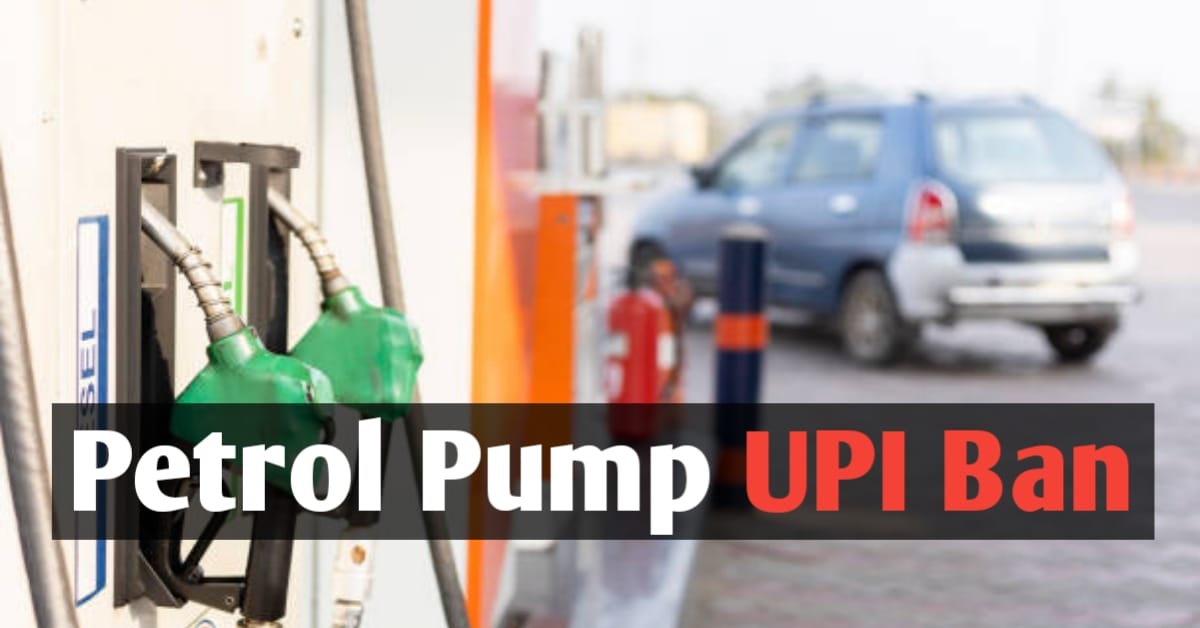Petrol Pump UPI Ban: The way people make digital payments in India is changing quickly, bringing both ease and some new rules. Recently, there has been talk in the transport and banking sectors about possibly putting limits on using UPI (a popular digital payment method) at petrol pumps.
To understand why this is being discussed, we need to look at the people involved, the rules they follow, and how digital payments are managed. This article explains the situation in simple terms to help readers understand why such changes might happen.
Understanding and possibly limiting digital payments at petrol pumps is a complex issue that involves many experts. Banks and financial institutions know how digital transactions work, how to keep them safe, and what they cost.
Their knowledge helps decide which payment methods are best. Petrol pump owners and managers also play an important role because they deal with payment systems every day and know what is practical for their business.
Government authorities like the Reserve Bank of India (RBI) and those in charge of the fuel industry help create rules and protect consumers. To make any decisions about restricting digital payments at petrol pumps, we need to consider the views and knowledge of all these groups.
Petrol Pump UPI Ban

Authoritativeness of Information Sources:
To truly understand any rules about limiting digital payments at petrol pumps, it’s important to get information from trusted sources. This includes official announcements from the Ministry of Petroleum and Natural Gas, guidelines from the RBI, and statements from well-known industry groups.
Trusted financial news websites and research studies also help explain things clearly. On the other hand, news from social media or unknown sources should be viewed carefully.
Always check who shared the information, whether they are reliable, and compare it with other trusted sources. Before believing or reacting to any news about UPI restrictions at petrol pumps, make sure it comes from a genuine and verified source.
Trustworthiness and Reliability of Payment Systems:
People use digital payments like UPI because they trust that the system is safe and works well. For contactless payments at petrol pumps to run smoothly, the technology behind them needs to be strong and reliable. This means secure transactions, quick issue resolution, and clear tracking of payments.
Trust also grows when there are clear rules about charges, privacy, and how to handle complaints. If there’s ever a plan to limit the use of UPI at petrol pumps, it should be clearly explained and must ensure that any changes do not reduce the trust or efficiency of the current payment system.
Examining the Potential Drivers for Limiting Digital Methods at Fuel Retailers:
Digital payments have many benefits, but there may be some practical or financial reasons why people are talking about limiting them at petrol pumps. It’s important to look closely at these possible reasons.

1.Merchant Discount Rates (MDR): One possible issue is the Merchant Discount Rate (MDR), which is a small fee charged to petrol pump owners when they accept digital payments. UPI usually has little or no such fee, but other digital payment methods can cost more.
Since petrol pumps make only a small profit on fuel, these extra charges can affect their earnings. Talks about limiting digital payments at fuel pumps might be happening because of disagreements over these fees.
2.Infrastructure and Connectivity Issues: In some remote or underdeveloped areas, internet connections may not be strong or stable. This can cause digital payments to fail, creating problems for both customers and petrol pump staff. In these places, people might prefer using cash or other offline payment methods instead.
3.Transaction Processing Time: Digital payments are usually fast, but sometimes they can be delayed because of network problems or system errors. At busy petrol pumps, even small delays can add up and cause long lines. This might be one reason why it’s important to have a mix of payment options.
4.Security Concerns: Digital payment systems are mostly safe, but there is still a small risk of fraud or cyberattacks. Ongoing work is needed to keep all payment methods secure and reliable.
Read also:-👇
Gold prices skyrocket after Operation Sindoor – a new story of patriotism and market prices
The Consumer Perspective and the Future of Payments at Fuel Stations
For customers, using digital payment options like UPI at petrol stations is very convenient and matches their preference for cashless transactions. If these options were restricted, people might not be happy. The best solution would likely involve offering a mix of payment methods to suit different customer needs and technology levels.
It’s important to find ways to solve petrol station owners’ concerns while keeping digital payments easy for customers. This could include adjusting fees, improving internet connections in all areas, and making digital payment systems even more secure.
Conclusion:
In conclusion, the idea of limiting “UPI usage at petrol stations” is a complicated issue that affects many people. To fully understand it, we need to look at expert knowledge in finance and retail, rely on trustworthy sources of information, and focus on the reliability of payment systems. While there are some practical and financial reasons for the discussions, the overall trend is toward more digital payments.
The best solution is to find ways that meet the needs of petrol station owners and the preferences of customers who want easy digital payments. As India’s digital payment system continues to grow, it will shape how payments are made at petrol stations in the future.
